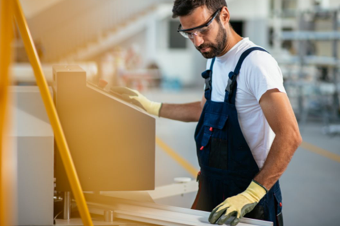
Why Go Green?
Building or remodeling a home is an investment in your future and the future of the planet. Choosing eco-friendly materials and practices creates a healthier living environment for you and your family, reduces your environmental impact, and can even save you money in the long run.
Thanks to advancements in technology and a growing focus on sustainability, it's easier than ever to incorporate green building practices into your project. De/Mar Design Studio is proud to offer a wide range of eco-friendly flooring options and resources to help you build a sustainable home.
Green Flooring
Flooring is a significant element of any home, and selecting eco-friendly options sets a strong foundation for your green building project. Let's explore some popular sustainable flooring choices:
Cork
Cork is a naturally renewable resource harvested from the bark of cork oak trees. It's known for its durability, resilience, and sound-dampening properties. Cork flooring is also hypoallergenic and comfortable underfoot.
Bamboo
A rapidly renewable resource, bamboo offers a stylish and eco-friendly alternative to traditional hardwood flooring. Bamboo is known for its strength and durability and can be finished in a variety of colors and stains.
Making Smart Choices for a Sustainable Home

Production
Consider the environmental impact of the flooring's production process. Look for materials with minimal waste generation and energy-efficient manufacturing practices.

Considerations
Think about the lifecycle of your flooring. Choose durable and long-lasting materials that require less frequent replacement. Explore options with low maintenance requirements, reducing the need for harsh cleaning chemicals.

Home Benefits
Green flooring options can contribute to a healthier living environment by improving indoor air quality, reducing allergens, and providing a comfortable surface for walking and playing.
Green Home Maintenance
Going green extends beyond the initial product selection. Here are some tips for maintaining your eco-friendly home:
Cleaners
Use natural cleaning products whenever possible. Opt for vinegar, baking soda, and water for a powerful yet safe cleaning solution.
Avoid harsh chemicals and cleaners that can release harmful VOCs into the air and potentially damage your flooring.
Ready to start your flooring project?
